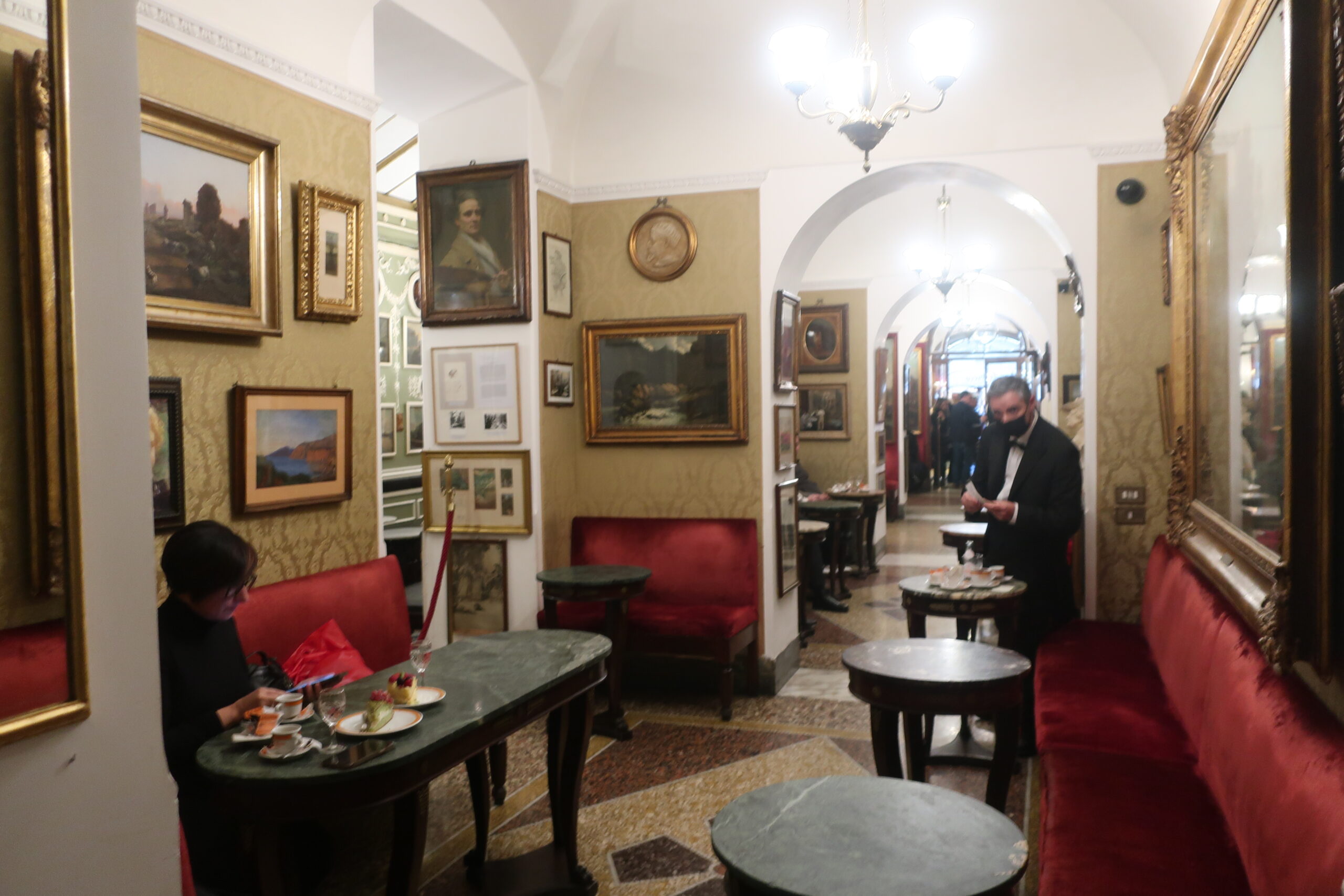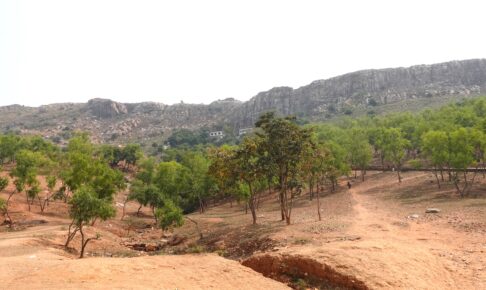Table of Contents
(3) Visit to Caffe Greco, a long-established restaurant in Rome - a mecca for artists where Goethe, Andersen, and Mendelssohn also frequented.
Previous Article(2) Introducing Piazza di Spagna in Rome, where the great writers stayed! We're crazy about the fountain of Bernini's masterpiece "Barcaccia."In the following section, we talked about Piazza di Spagna, which was the base of the literary greats' stay in Rome.
In this article, I would like to talk about the long-established Café Greco, located near Plaza España.
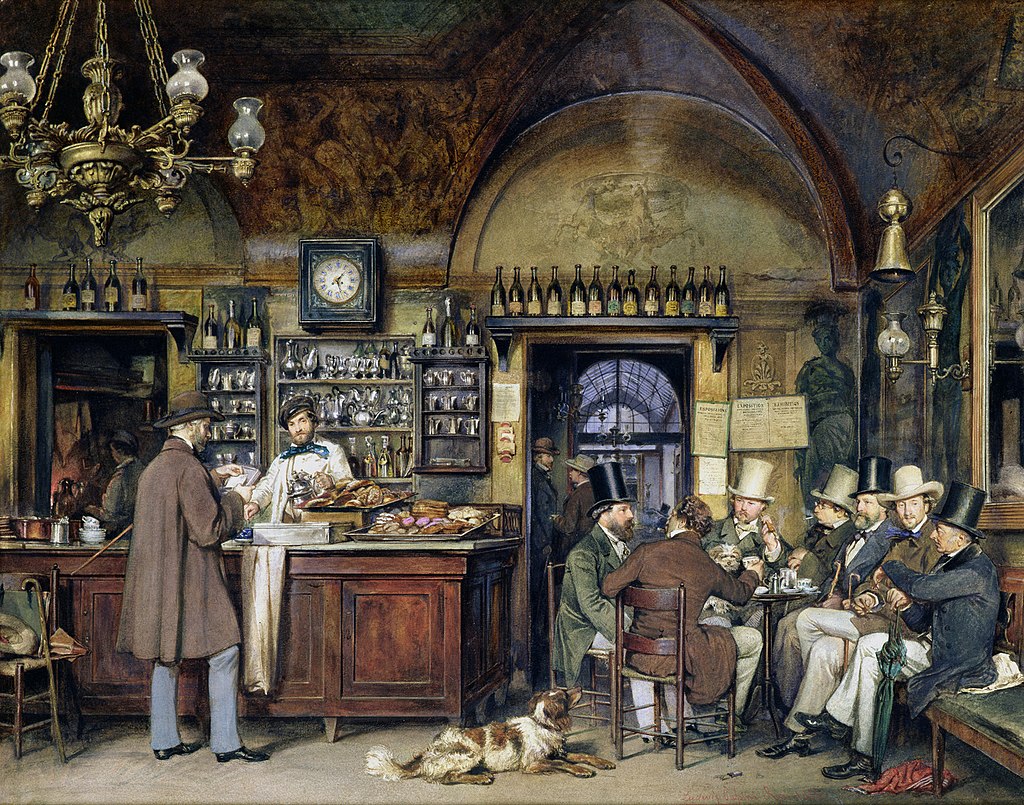
Café Greco is a famous restaurant where Goethe, Andersen, Mendelssohn, Berlioz, and countless other famous people have spent time. It has become a sacred place for lovers of literature, painting, and music.
Before I talk about Caffe Greco itself, I would like to introduce the historical background of the establishment of this café. It is very interesting to see the uniqueness of Rome from this background.
Rome as a Grand Tour destination
Piazza di Spagna was sometimes called the "English ghetto" in the 18th century. This was because English gentlemen who came to Rome on the so-called "Grand Tour" preferred to settle in the exclusive locanda of Piazza di Spagna. As Dr. Johnson famously said, "He who has not seen Italy has not seen what he ought to see, and will be tormented all the days of his life with a feeling of inferiority. There were even social clubs that made a trip to Italy a condition of membership. Needless to say, Rome was the main destination of the "Grand Tour. (omitted).
The British who came to Rome in the eighteenth century were not all "gentlemen" of great travel. For example, the painters Richard Willson and Joshua Reynolds, as well as the architect Robert Adam, visited Rome in the 1750s. Although they did not play as important a role in the development of Roman art as other national artists, they each returned to their hometowns and succeeded with works that drew on what they had learned in Rome. Also,The History of the Decline and Fall of the Roman Empire.We cannot forget Edward Gibbon and others who are well-known for their
These English and other foreign travelers, literary figures, and artists became hangouts and meeting places for the great creations of the 18th century, the cafes. The oldest café in Rome was the Café del Veneziano, which opened in 1725 in Piazza della Challa, but the Café degli Inglese in Piazza di Spagna was famous for its interior decorated by Piranesi, who was widely known for his prints of ancient Roman ruins. The Cafe degli Inglese is located on the corner of Via Carozza, the street with the most hotels and restaurants in the area at the time, and as its name suggests, was frequented by the British.
Unfortunately, most of these old cafes have disappeared with the passage of time. However, there is only one café that continues to do business as it did in the past. The famous Cafe Greco, located at 86 Via Condotti, is one such cafe.
Yoshikawa Kobunkan, Masumi Ishinabe, "San Pietro ga Tatekiri: My Guide to Rome," P33-35
Children of the upper class at that time were heading to Italy to complete their education. There they saw the art and architecture of Rome and made connections.
This grand tour was previously discussed in this blog by Toshiro NakajimaThe English Way of Travel: From Grand Tours to Garden CultureThe book was called.
In this book, the background of the Grand Tour and its impact on the country are explained in an easy-to-understand manner. The book explains the background of the Grand Tour and its impact on the country. This is a great book and I highly recommend it. It also gives a very interesting perspective on traveling to Rome.
And the places where these travelers hung out and socialized were the "cafes.
Among these, the one that has remained unchanged from the past is Café Greco, which we will introduce here.
History of Café Greco - and its deep connection to the fairy tale writer Andersen.
Café Greco, or the Greek Café, is a somewhat odd name, but it was given to this café because it was started by a man from Lepanto, Greece. Historical documents show that Café Greco was in the same location in the 1760s as it is now, which means that it has been in existence for over 200 years. The only major difference between today's Cafe Greco and those of the past is the addition of a bar counter at the entrance. The reason why Caffe Greco is so famous is that it was a place of exchange for many foreigners and Italian artists and writers of the modern era.
Today, Café Greco has become a bit of a tourist attraction and is always full of tourists who want to experience the atmosphere of a bygone era. The number of foreigners is the same as in the past, but the popularization of tourism is overwhelming. No one is discussing art anymore. I too like the atmosphere of Cafe Greco, but I am usually content with just sipping a cappuccino at the counter. If I wanted to meet someone, I would choose Babington's Tea Room by the Svein Staircase, which is also a venerable cafe.
Of course, Café Greco is worth a visit. The long, narrow room with a bench on one side, called the "lomnibus" (rideshare), and a rather large room in the back called the "sala Rossa" (red room), covered with crimson wall cloth, are decorated in the neoclassical style and convey the atmosphere of the good old days. The walls are covered with paintings, sculptures, portraits, and letters by artists associated with the cafe, and a replica of a coffee cup from 1830 is displayed in a show case. It is a bit like a living museum. There are relief portraits of Liszt and Berlioz, a statue of Mark Twain, a relief of Gabriele d'Annunzio, a portrait of Goethe, and even a letter from Andersen. At one time Andersen rented a room with his traveling companion on the floor above Café Greco, and he provided his friend with a diagram of the room. According to the letter, there is a carpet in the room, Roman landscape paintings and mirrors on the walls, and roses and arabesques on the balcony. And at dusk, Andersen wrote, the room is lit by a four-handled lamp in addition to a candelabra.
Yoshikawa Kobunkan, Masumi Ishinabe, "San Pietro ga Tatekiri: My Guide to Rome," P35-37
I think that you have already understood how many eminent personalities have gathered at Café Greco. You may have also been surprised to learn that Andersen, the author of children's stories, had a deep connection with this café.
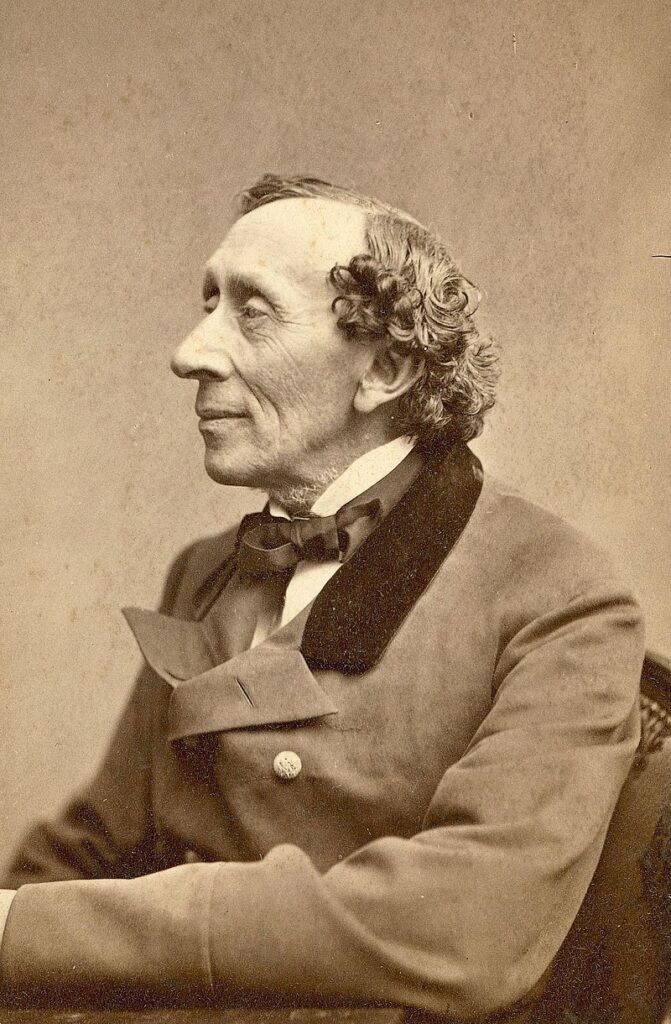
The Disney movie was based onThe Little MermaidandThumbelina.Andersen, a Danish writer of children's stories who has created numerous masterpieces, including In fact, he is also known for his deep love for Rome, and his debut novelThe Improvising Poet.is truly a product of his love of Rome.
Until I learned about Rome, I had never even imagined that there was a connection between Andersen and this city. Rome is a different order of magnitude, after all. The value of this city of art to the European cultural figures must have been immeasurable.
Goethe and Café Greco - Distinguished faces gather at Café Greco
The painter Tischbein, who gave Goethe a room at Café Greco, wrote that it was very convenient for German art lovers to meet here. In his memoirs, the literary scholar Moritz, whom Goethe also considered "an uncommonly agreeable character," wrote that Café Greco was a meeting place for young artists visiting the villas and museums. In contrast, Goethe's "Travels in Italy" does not mention Café Greco, but it is not hard to imagine that he and Tischbein and others frequented this place. This is why it is a myth that "Iphigénie" was written at Café Greco. However, it is difficult to imagine that Goethe was writing his poems in a dark and noisy café.
As the testimonies of Goethe's neighbors indicate, in contrast to Café degli Inglese, Café Greco was frequented by Germans and Scandinavians. It is no wonder that the poet Wilhelm Heise jokingly described it as a "Café Tedesco" (German café) in a letter from 1783. Goethe, Trovaldsen, Gogol, Schopenhauer, Mendelssohn, Berlioz, Stendhal, Thane, Andersen, Rist, Wagner, Anatole France, Hawthorne: the list of Café Greco's foreign customers is endless and Germanic.
Yoshikawa Kobunkan, Masumi Ishinabe, "San Pietro ga Tatekiri: My Guide to Rome," P37-38
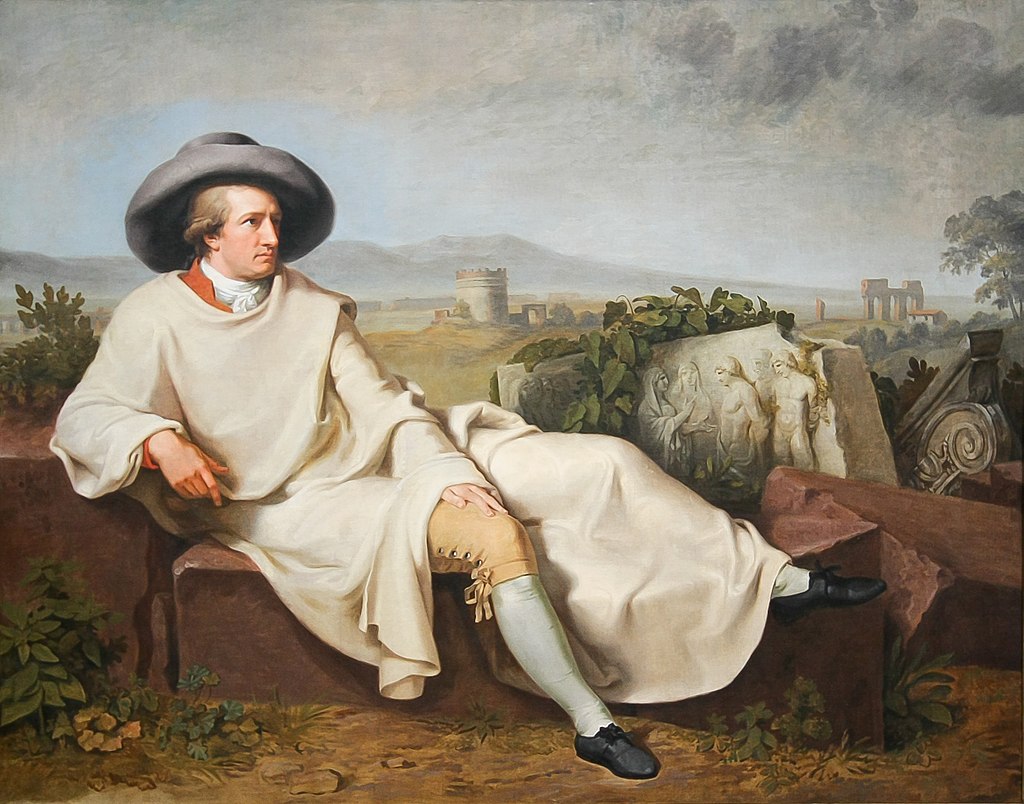
Tischbein was the artist who painted this famous portrait of Goethe. He was the guide of Goethe's stay in Rome.
And the second half of the list in the quote above must have surprised you all. I was also astonished when I saw it for the first time. Even that Schopenhauer was here? Even Gogol, the Russian literary scholar! Mendelssohn, Berlioz, Liszt, Wagner...!
Such a distinguished lineup was present at Café Greco. And yet, the appearance of these people has hardly changed at all since then. This is nothing short of astonishing.
Café Greco as a place where Mendelssohn and Berlioz became close friends.
So what was Cafe Greco like in the past? As a clue, I would like to draw on the testimonies of two Frenchmen. The first one is Berlioz, who came to Rome in 1830 with the Prix de Rome. He said, "The famous Café Greco was a place where I could enjoy the music of the city. The famous Cafe Greco is certainly the worst taverna imaginable. It is dirty, dark, and dank. There is nothing to explain why artists from all over the world who live in Rome like to gather here. Of course, Berlioz himself was a regular patron of Caffè Greco, and it was at Caffè Greco that he became friends with Mendelssohn, for example. Next is the famous art theorist Ippolito Taine. In 1864, he wrote: "A long, narrow room is rather cheap. The long, narrow room is rather cheap, neither elegant nor elegant, but comfortable enough. It is true that everything is very cheap: a cup of good coffee costs only three sordis. In short, Café Greco in the Golden Age was not an upscale café, but rather an affordable and convenient hangout for artists and cultural figures from all over the world.
The Café Greco also served as a base not only for foreigners, but also for Italian writers such as D'Annunzio and Pasquarella. Considering these facts, Café Greco may be considered a symbol of Rome in a different sense from the Colosseum and St. Peter's Basilica, another symbol, so to speak.
Yoshikawa Kobunkan, Masumi Ishinabe, "San Pietro ga Tatekiri: My Guide to Rome," P38-39
As a lover of Mendelssohn, I found the episode here at Cafe Greco very interesting.
Mendelssohn was very much influenced by Goethe's "Travels in Italy. It can be said that Mendelssohn's stay in Rome was accompanied by Goethe. Mendelssohn was also at the Cafe Greco where Goethe also spent time. And it is a very touching story that Mendelssohn met Berlioz there.
It is also interesting to note that Café Greco used to be a convenient and affordable place to hang out, as mentioned in the latter part of the quote. I think the interesting history of this café is that the cultural crowd did not gather there because it was upscale.
Visit Cafe Greco
Now that we have seen the description of Cafe Greco, it is time for me to visit the restaurant.
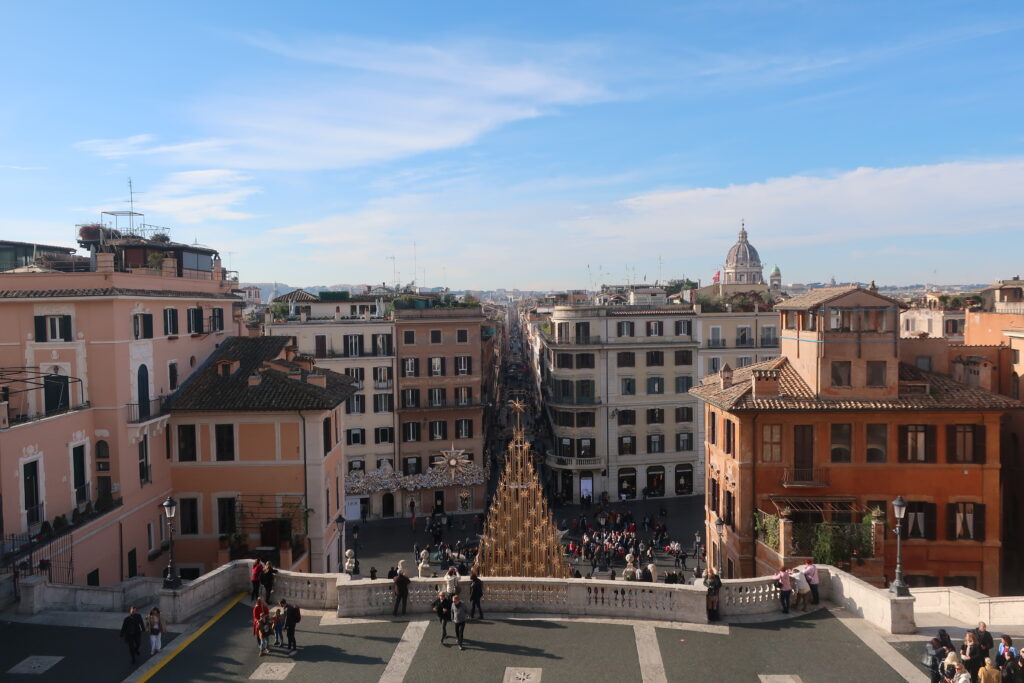
This photo was taken from the top of the Spanish Steps, and Café Greco is located on the street just directly in front of Plaza de España.
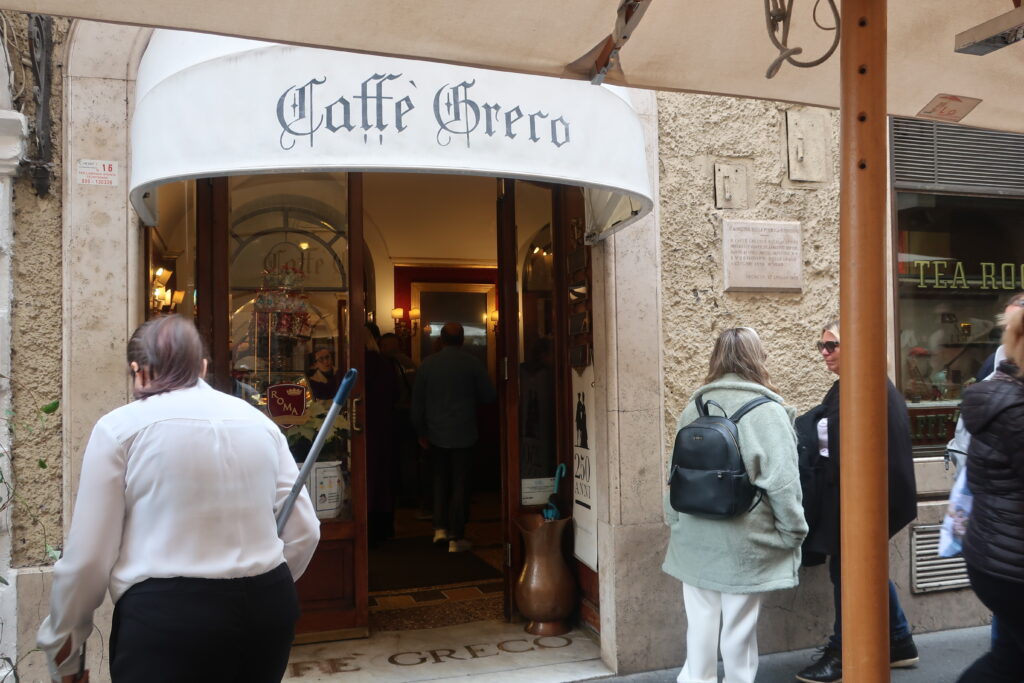
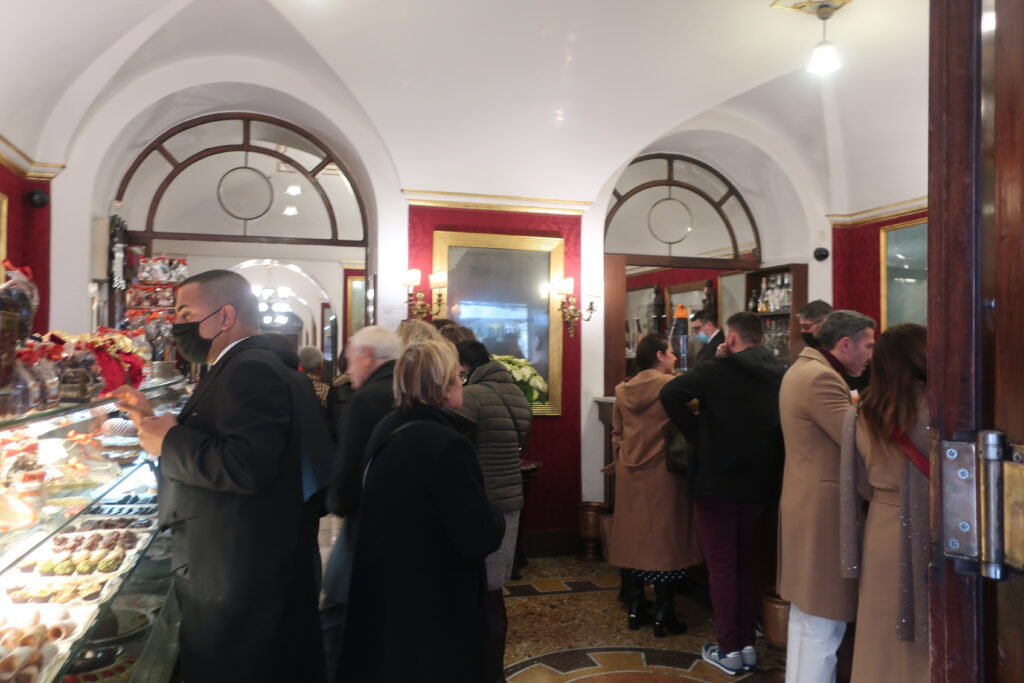
The area immediately after entering is a bar counter and food area where people drink espresso or order takeout. This photo shows a fairly empty area. If you want to enjoy yourself in the cafe area, let the staff know and they will let you in.
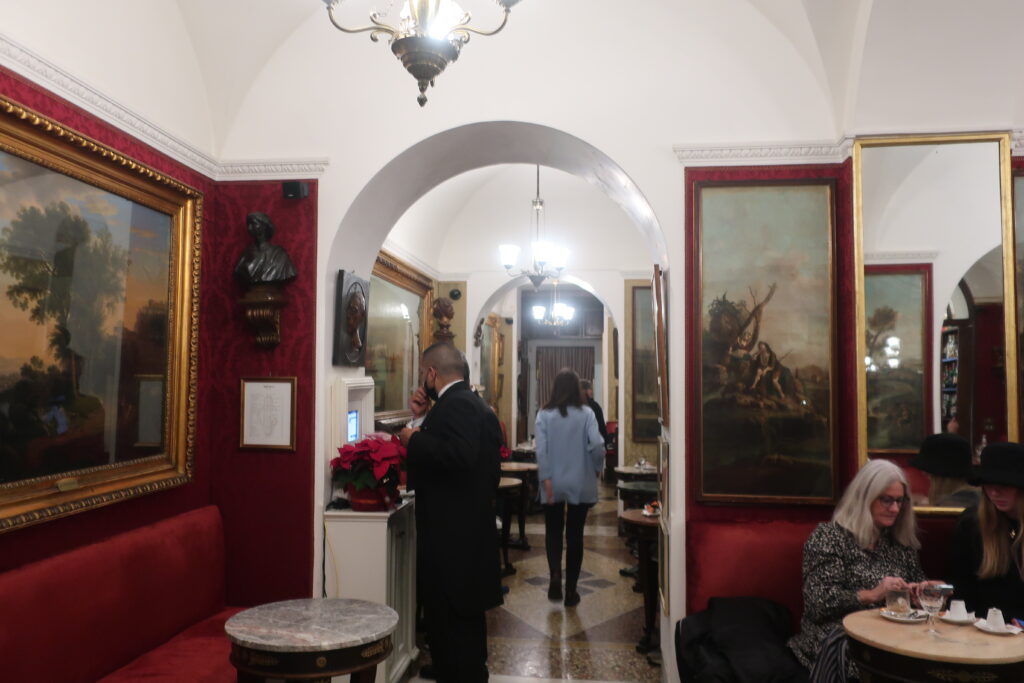
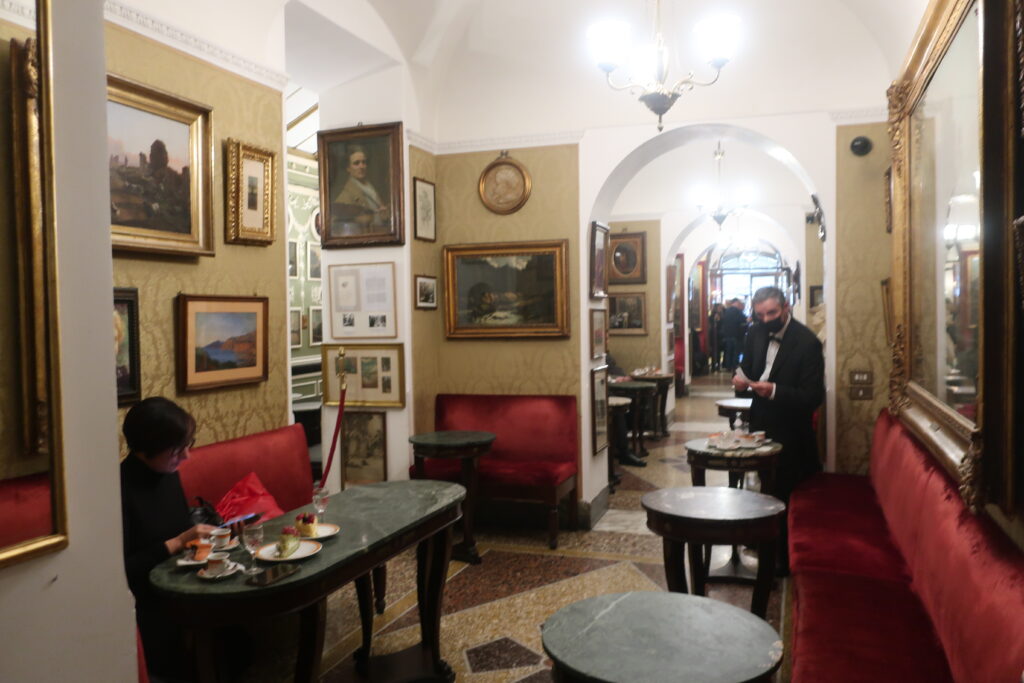
The room has an unusual structure with seating along a narrow aisle, but its walls are covered with paintings. The walls are covered with paintings.
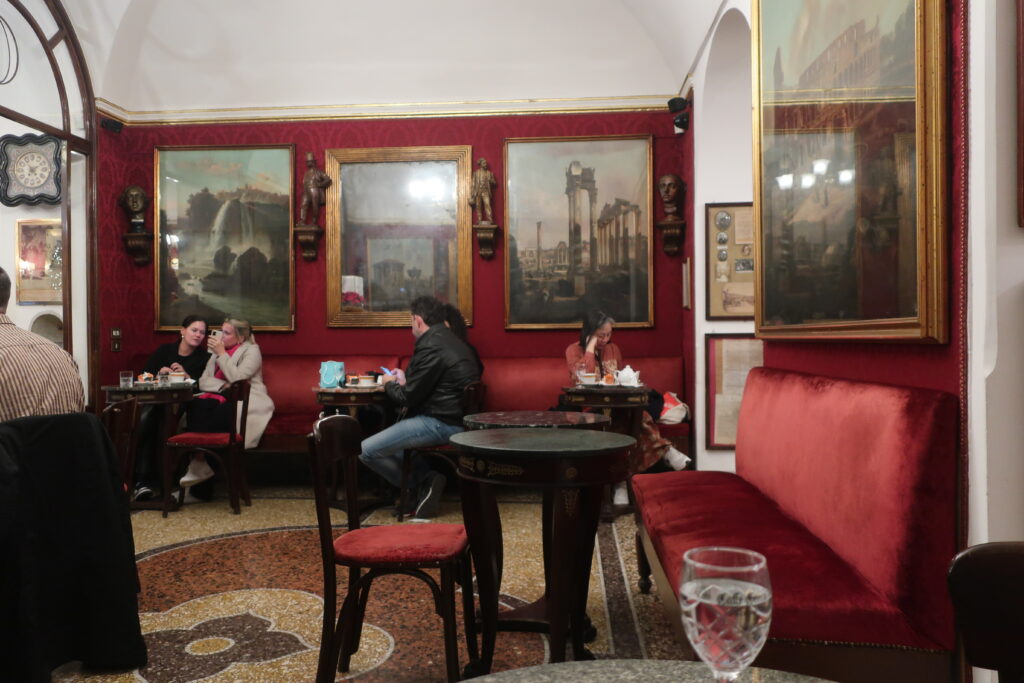

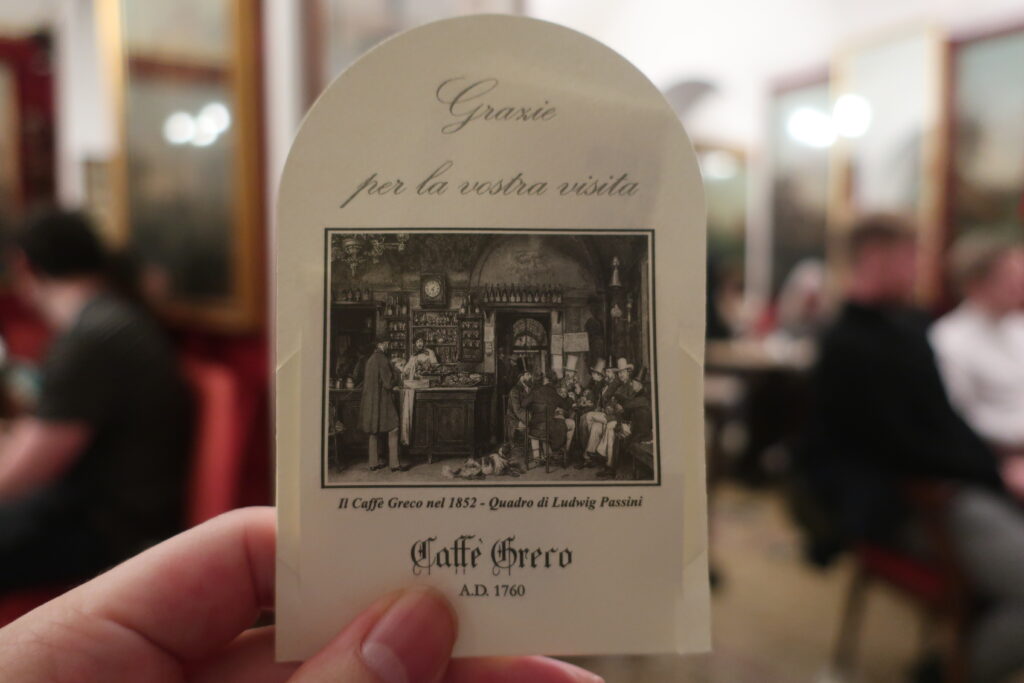
I took a seat near the entrance and ordered an espresso and a cappuccino all at once. I had come all this way, and I wanted to savor it to my heart's content.
This is where Goethe, Andersen, and Mendelssohn had their coffee.
The coffee I had while thinking about this was exceptional.
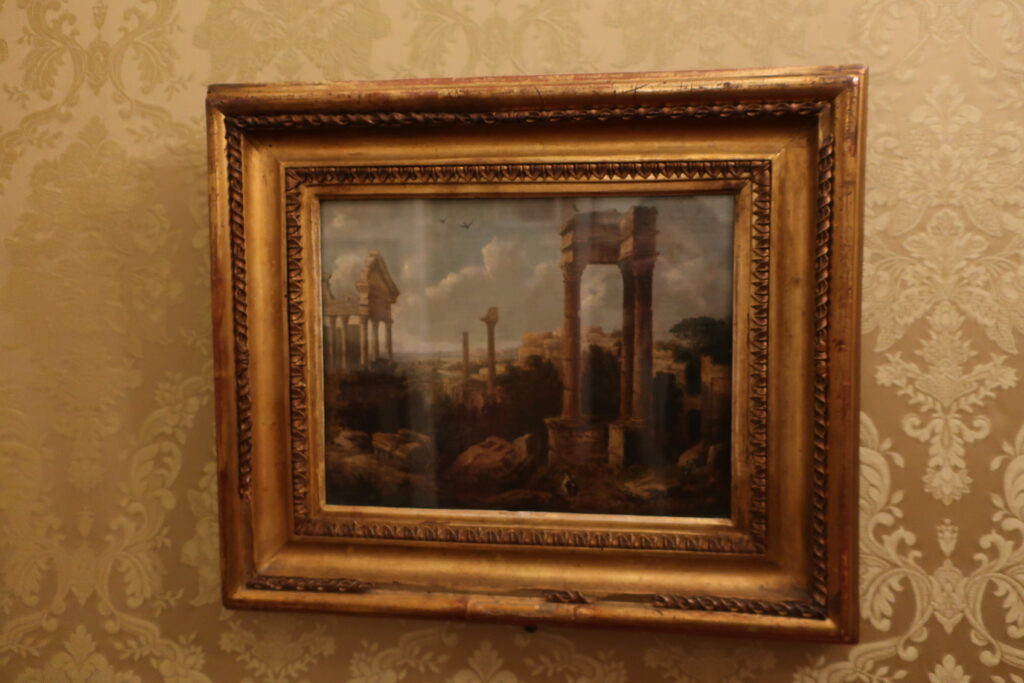
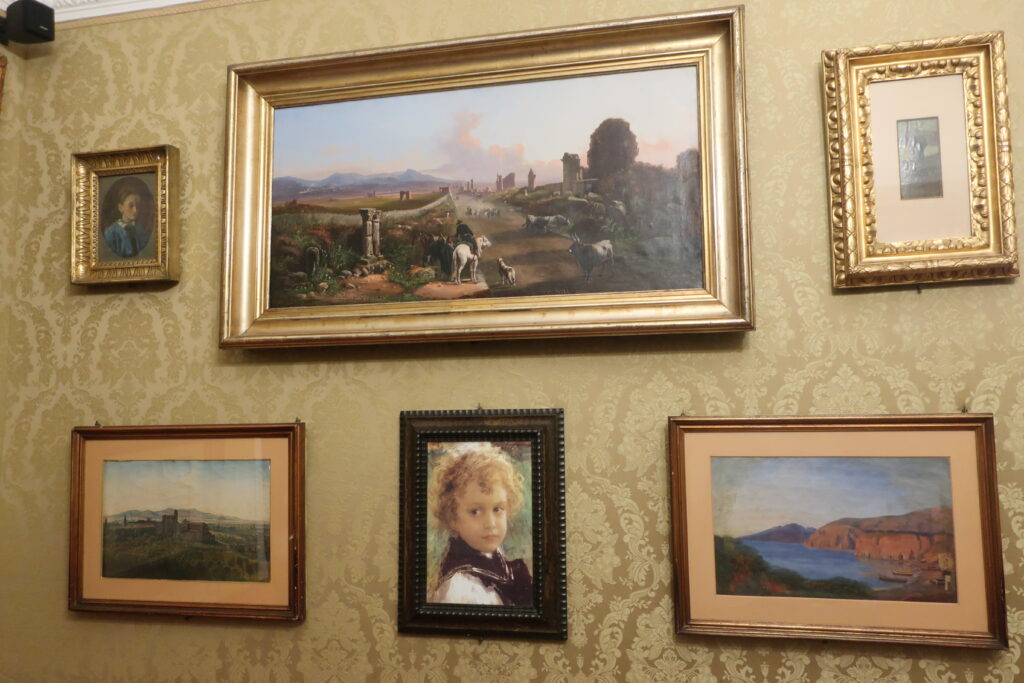
Most of the pictures hanging on the walls are landscapes of Rome in the good old days. Rome used to be a city with an idyllic atmosphere that could be described as countryside before it was incorporated into the unified Italy in 1870. The area around the Roman Forum had not been excavated; it was a place where cows walked around, buried in the soil and covered with greenery.
The Rome that Goethe, Stendhal, Mendelssohn, and others saw was such a good old Rome. The same was true in 1863 when Dostoevsky visited Rome. The paintings on display here give us a sense of a completely different Rome from the one we see today.
As one would expect from a long-established business with a history of over 200 years, this is a great place to feel nostalgia. It is the best place to feel nostalgia.
I visited this place many times during my stay in Rome. No matter how many times I come here, it is always an exciting place. Each time I was excited by the thought that the great people I admired were here.
This is a must-see spot in Rome for fans of literature, painting, music, and history. We hope you will visit this place, too.
be unbroken
*The list of articles in the "Rome Travel Journal" can be found atCategory page hereindicates direction or goal (e.g. "to")
*Please visit this category page for recommended books to learn about Rome and Italy.
The Rise and Fall of the Roman Empire, the Vatican, and Roman Catholicism."
The Italian Renaissance and the Revolution in Knowledge."
Next Article.
Click here to read the previous article.
Related Articles











